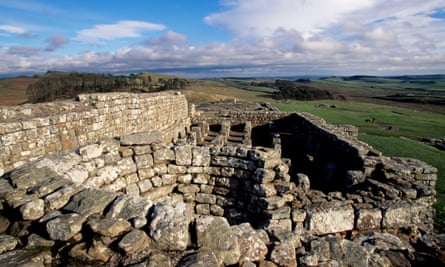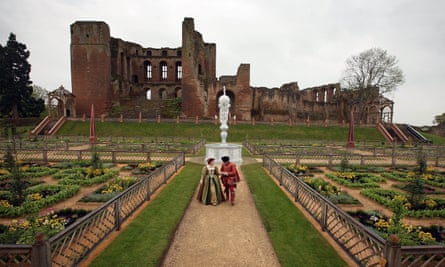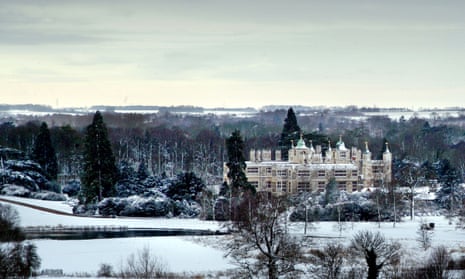Beneath Dover Castle, an imposing Gothic bulk atop the chalk hills of the English port, is a labyrinth of tunnels. Dug in the 18th century for troops garrisoned there as a first line of defence against revolutionary France, the tunnels have recently developed a ghostly reputation.
Once a month, English Heritage, which manages the site, evacuates the tunnels for staff to perform sweeps, searching for any of the mysterious figures that tourists have reported seeing. In one report, a heavy door slammed shut and a stretcher trolley, part of a wartime exhibit, raced along the corridor as if pushed by a violent force. In another, a stranger in wartime fatigues approached a small boy asking for his help to find “Helen” (neither man nor his quarry were found).
With such tales coming out from many of its historic sites, it is a little surprising that English Heritage felt it needed to recruit authors to invent new ghost stories. But the charity has commissioned eight – including Jeanette Winterson, Mark Haddon and Sarah Perry – to contribute to Eight Ghosts, a collection of spectral tales set in some of its spookier sites, including Dover Castle, Hadrian’s Wall and Audley End.
“The castles and stately homes of England have long inspired ghostly myths and legends,” says English Heritage editor Bronwen Riley. “After all, white ladies, cursed souls and headless apparitions all need somewhere fitting to haunt.”
Some of the authors did not have to travel far from their own geographical origins. Glaswegian Kate Clanchy chose Housesteads Roman Fort on Hadrian’s Wall, Northumberland, while Perry chose Audley End in Essex, which she visited as a child. Others chose more unusual settings: Haddon used the York Cold War Bunker – described by English Heritage as its “most modern and spine-chilling” site – while Jeanette Winterson selected Pendennis Castle, Cornwall.

Location is vital to a good ghost story, and ancient houses and abandoned barracks are standard tropes in a genre that has deep roots in English architecture; from Mr Lockwood’s bedroom in Wuthering Heights to the Dartmoor manor in Catherine Fisher’s Chronoptika series. As Andrew Michael Hurley, author of horror novel The Loney and, in Eight Ghosts, a story set in the dungeons of Carlisle Castle, says: “Buildings, like ghosts, are things that endure beyond the usual human span of life. They are the theatres in which the past may be replayed.”
Kamila Shamsie saw the ruins of Kenilworth Castle as “like a bombed-out building”, making them a perfect backdrop to her tale of the castle’s night security guard, who has arrived in England from an unnamed war-torn country and is facing the horrors of his past through the prism of a night in which the events may be real or imagined.
“I drew very much on the ghost stories that the English Heritage staff at Kenilworth told me – stories of voices from behind locked doors, presences felt in the kitchen,” the Burnt Shadows author says. A specific architectural feature of the building niggled her imagination, she adds: “I noticed that the guidebook kept referring to unusually large windows built into Kenilworth Castle through the centuries – it raised the question: did they want to let in the light or were they afraid of something in the dark?”

The architecture of ghost stories is based in the landscape of memory, whether real or imagined, which often means they contain a dreamlike quality – think of the nightmarish glimpse of the sheet-wrapped ghost in MR James’s Oh, Whistle, and I’ll Come to You My Lad. Perry, who visited the Great Hall at Audley End for the first time in 20 years for her story, had this uncanny feeling while gazing at the Jacobean splendour: “I thought I’d forgotten it all – but there was the yew hedge looking like black stormclouds, and the fire buckets hanging from the ceiling, as if I remembered it all from a dream.”
There are creepy exceptions to the gothic homes and castle ruins: the York Cold War Bunker may be a modern structure, but Haddon calls it “a genuinely disturbing place … It was in use during my lifetime in the expectation that the majority of the human race might be burned from the surface of the earth,” he says. “You don’t get that kind of frisson at Kenilworth Castle.”

The popularity of ghost stories has been tied to societal change: in Victorian times, with their servants suddenly popping out of hidden passages around their creaky, gaslit houses, and spiritualism coming into vogue, the middle classes marvelled at the ghostly possibilities of new technologies such as radio and telephones, setting new parameters for what was possible. Their popularity today, Perry believes, reflects the insecurities of our age. “Ghost stories and the gothic tend to have something of a resurgence in the aftermath of periods of rationalism and scientific advance, as if the reader sighs and thinks: wouldn’t it be nice if there was more to it all than this?” she says.
Haddon believes this hunger, for something beyond what is provable, is what drives writers to the genre. The self-proclaimed “ardent materialist” says: “I think a lot of literature is driven by a desire to find some kind of doorway into that other place. To look at it another way, isn’t the function of all fiction to bring the dead to life?”
- Eight Ghosts: The English Heritage Book of New Ghost Stories is published in October 2017 by September Publishing. Proceeds from this book will go towards the conservation of English Heritage sites across the country.

Comments (…)
Sign in or create your Guardian account to join the discussion